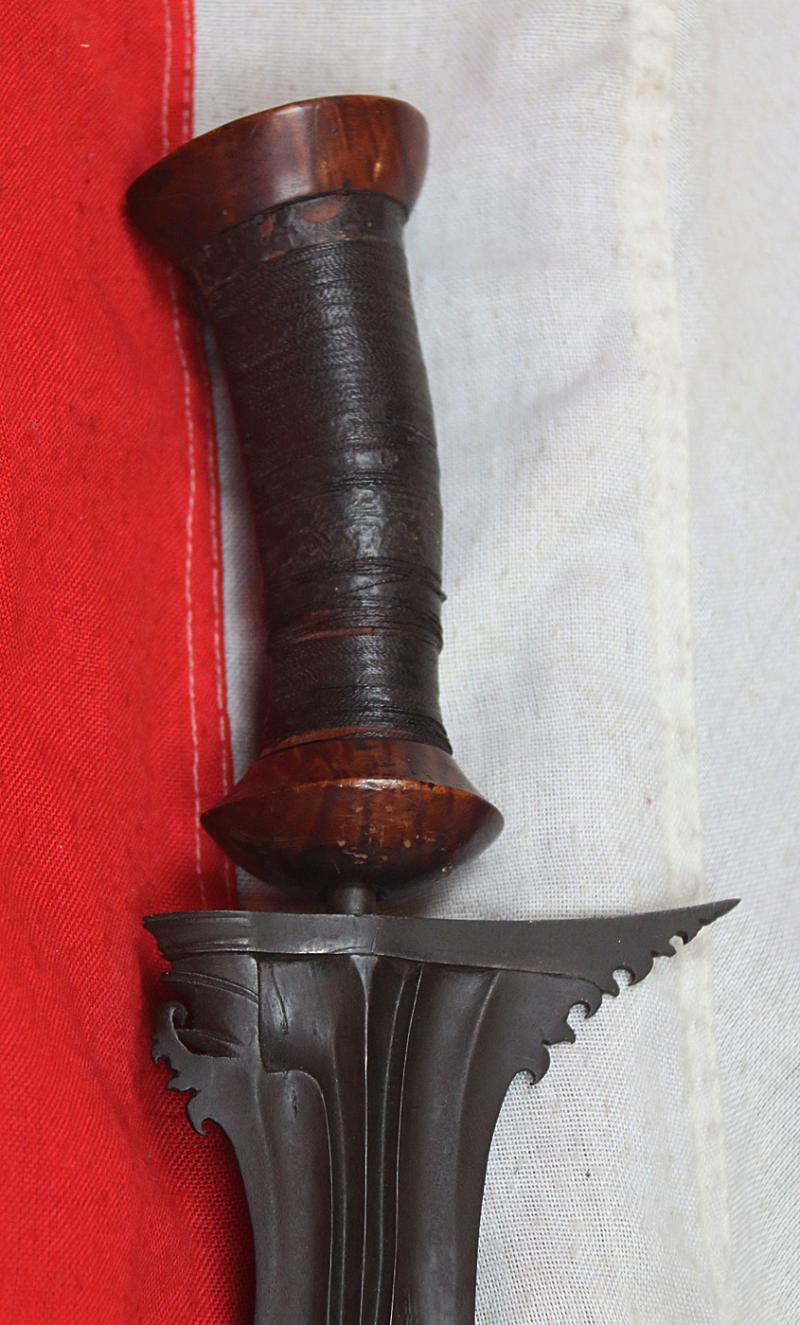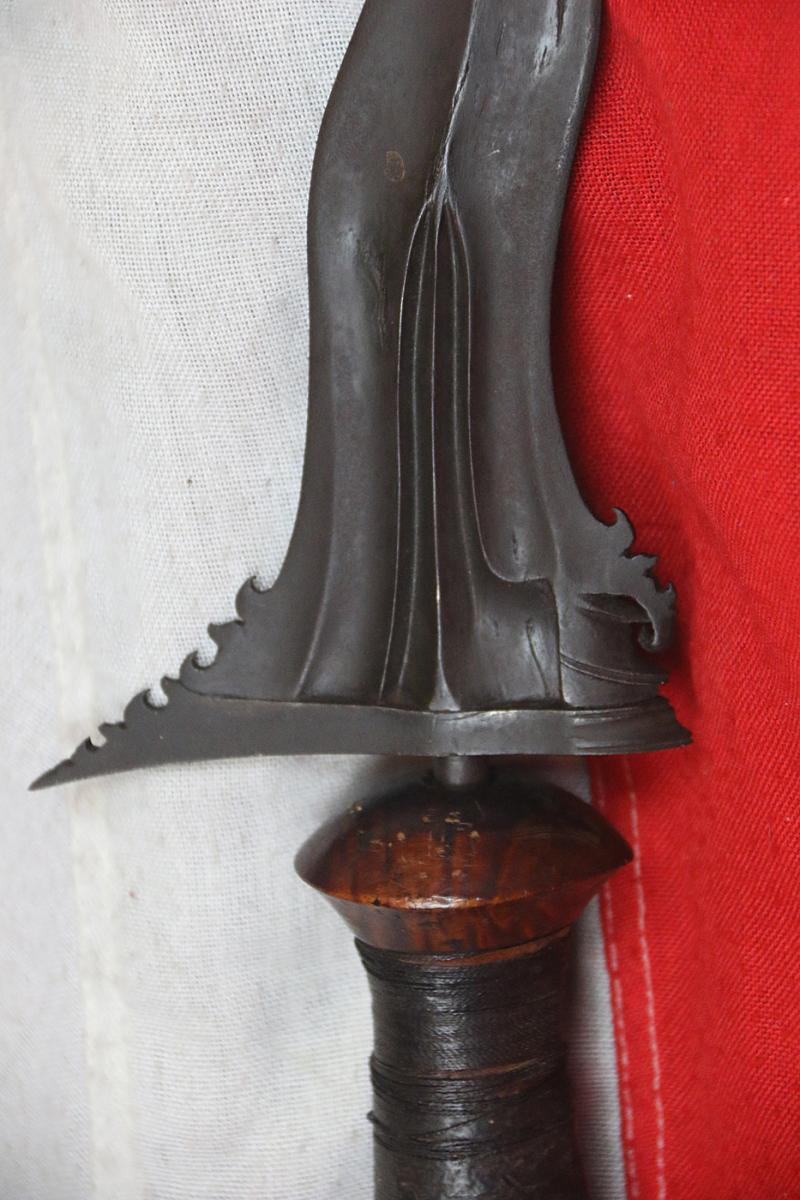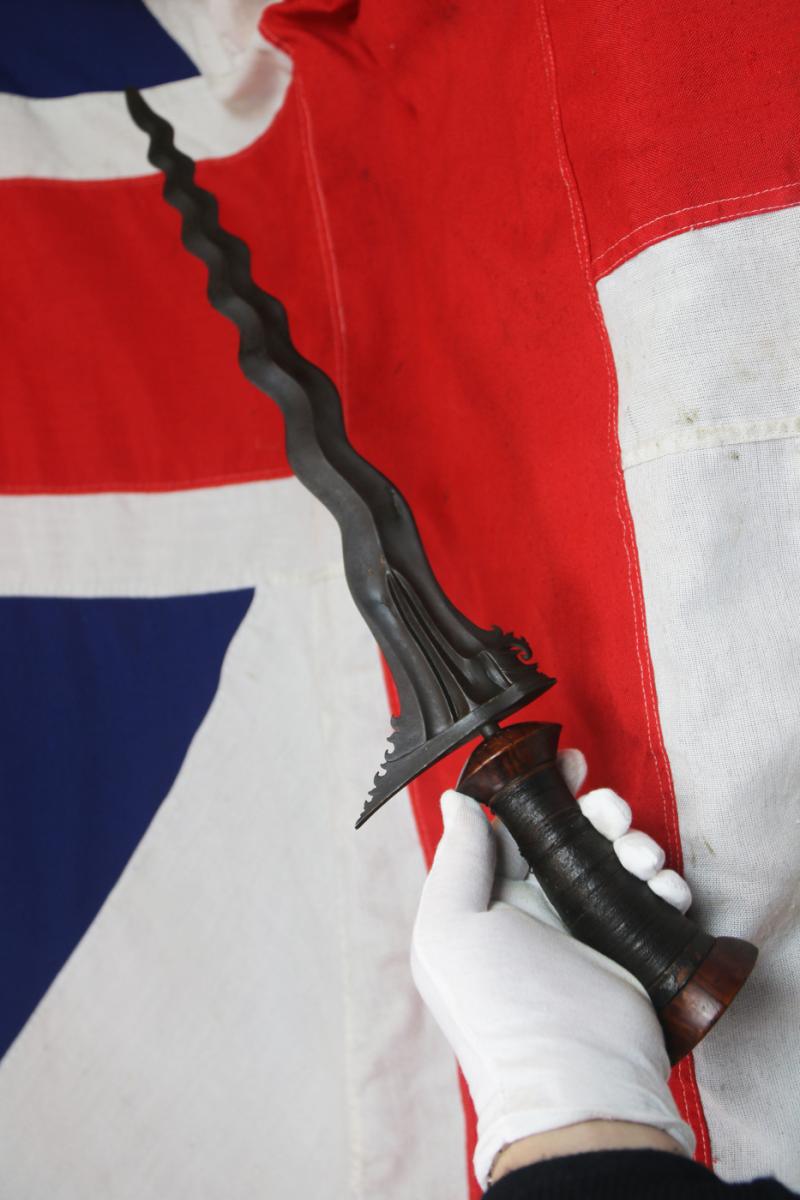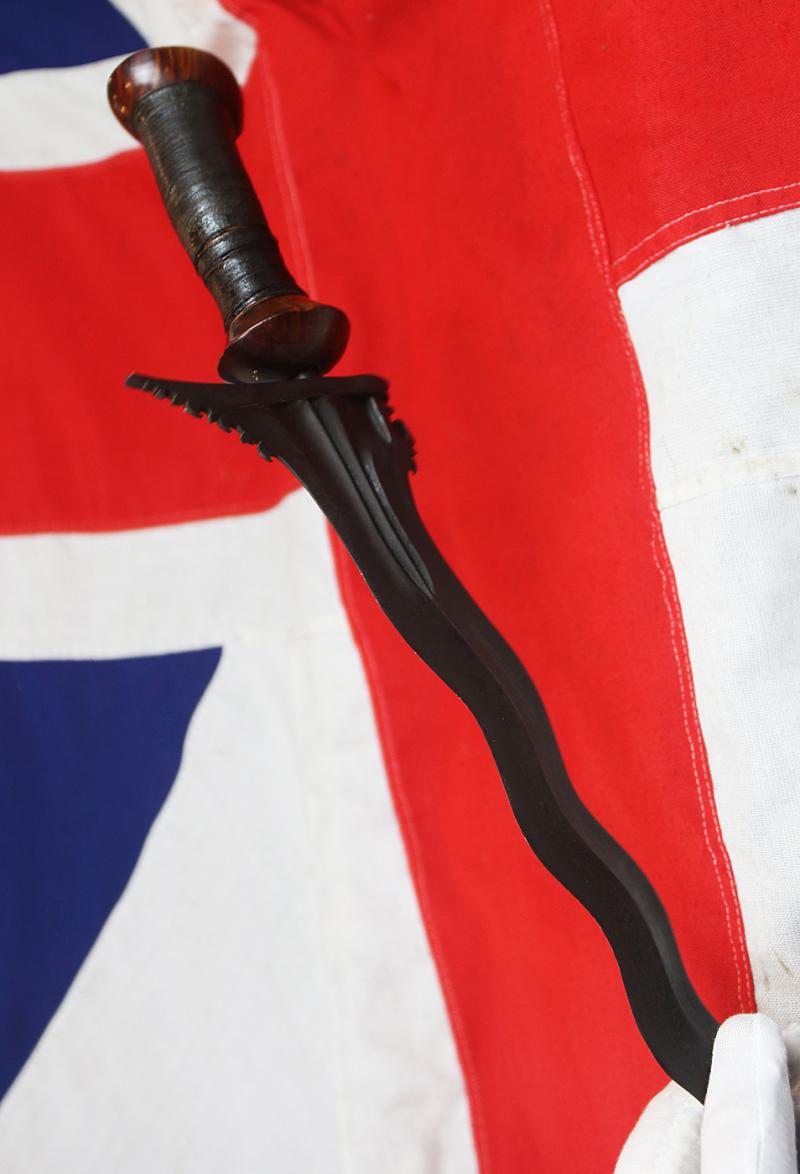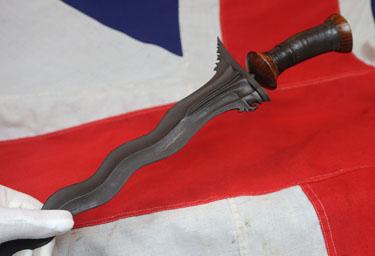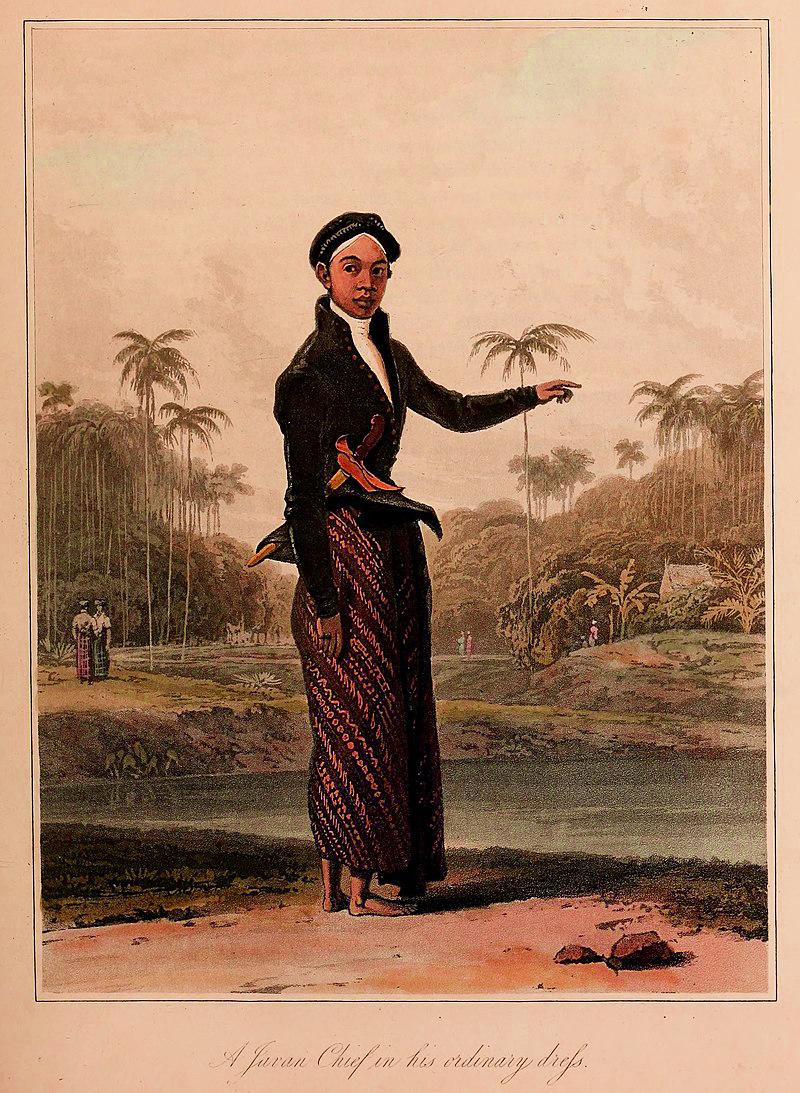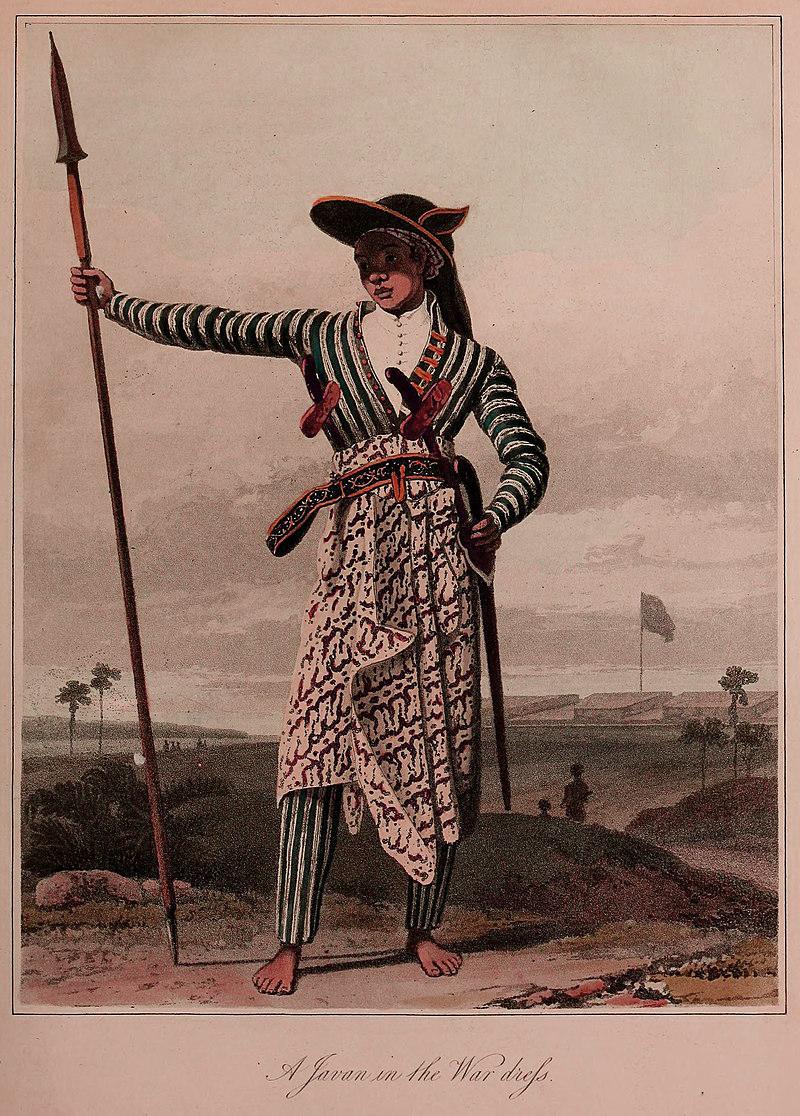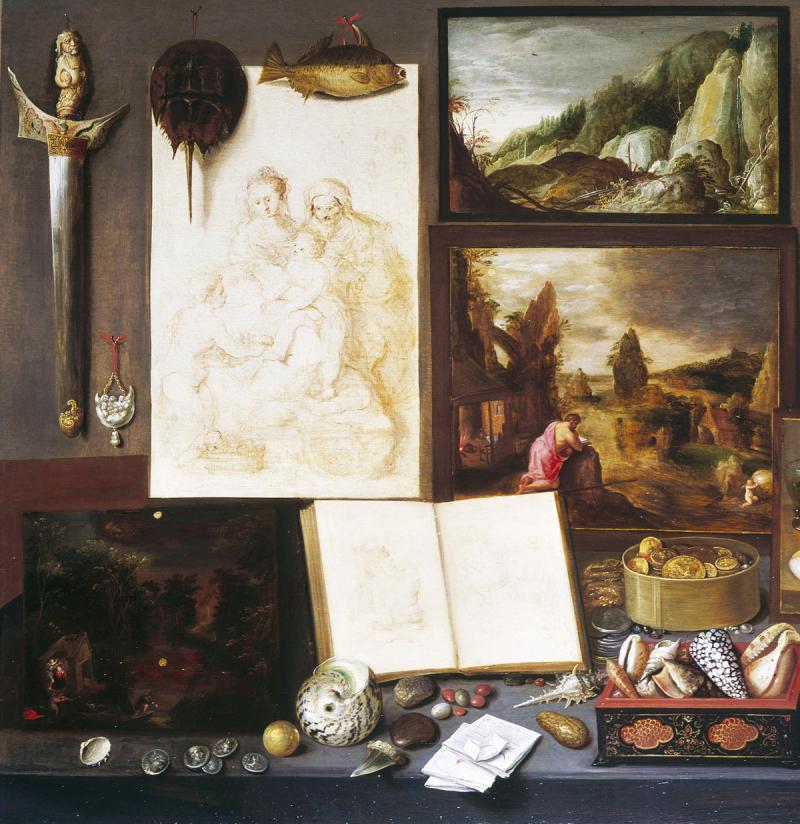A Scarce Large Antique Bali & Lombok Loncengan Hilt High Born Warriors Kris or Keris. With A Spectacular, Serpentine, 15 Luk {Curves} Blade
From the Bali or Lombok island of Indonesia. The very fine blade being also very finely polished likely leans towards Bali. Most keris or kris from other islands have course blades that are not meant to be highly polished as is this fine sword.
The Dutch first visited Lombok in 1674 and settled the eastern part of the island, leaving the western half to be ruled by a Hindu dynasty from Bali. The Sasaks chafed under Balinese rule, and a revolt in 1891 ended in 1894 with the annexation of the entire island to the Netherlands East Indies. This is a beautiful and scarce Kris with bound grip typically indicative of Lombok Keris,
Because some kris are considered sacred and believed to possess magical powers, specific rites needed to be completed to avoid calling down evil fates which is the reason warriors often made offerings to their kris at a shrine. There is also the belief that pointing a kris at someone means they will die soon, so silat practitioners precede their demonstrations by touching the points of the blades to the ground so as to neutralise this effect.
Reference; a Lanes Armoury *Special Conservation* Item, restored and conserved in our workshop, see info page for details on our conservation principles.
Painting in the Royal Collection by Frans Francken the Younger in the gallery, photo 10, painted in 1617, titled 'Cabinet of a Collector', clearly shows, top left, a 16th century Kris dagger, Even as early as the 16th century, awareness and collectability of the Indonesian kris had reached far into Europe.
The kris or keris is a distinctive, asymmetrical dagger from Indonesia. Both weapon and spiritual object, the kris is considered to possess magical powers. The earliest known kris go back to the tenth century and most probably spread from the island of Java throughout South-East Asia.
Kris blades are usually narrow with a wide, asymmetrical base. The sheath is often made from wood, though examples from ivory, even gold, abound. A kris’ aesthetic value covers the dhapur (the form and design of the blade, with some 40 variants), the pamor (the pattern of metal alloy decoration on the blade, with approximately 120 variants), and tangguh referring to the age and origin of a kris. A bladesmith, or empu, makes the blade in layers of different iron ores and meteorite nickel. In high quality kris blades, the metal is folded dozens or hundreds of times and handled with the utmost precision. Empus are highly respected craftsmen with additional knowledge in literature, history and occult sciences.
Kris were worn everyday and at special ceremonies, and heirloom blades are handed down through successive generations. Both men and women wear them. A rich spirituality and mythology developed around this dagger. Kris are used for display, as talismans with magical powers, weapons, sanctified heirlooms, auxiliary equipment for court soldiers, accessories for ceremonial dress, an indicator of social status, a symbol of heroism, etc. 19.5 inch blade, overall 24.75 inches.
No scabbard
Code: 24676
675.00 GBP



